Our 2011 Eastern Eurpoe Trip
Part 2 - Page 3
Late in the afternoon, Mary Ann and I toured the The Great Synagogue, also known as Dohány Street Synagogue. It is the largest synagogue in Eurasia and the second largest in the world, after the Temple Emanu-El in New York City. It seats 3,000 people and is a centre of Neolog Judaism. Neolog Judaism is a mild reform movement within Judaism, mainly in Hungarian-speaking regions of Europe.
The synagogue was built between 1854 and 1859 in the Moorish Revival style, with the decoration based chiefly on Islamic models from North Africa and medieval Spain (the Alhambra). The synagogue's architect, believed that no distinctively Jewish architecture could be identified, and thus chose "architectural forms that have been used by oriental ethnic groups that are related to the Israelite people, and in particular the Arabs." The idea was to build a synsgogue that looked like a church so Christians would not get upset with Jews in the area.
Even the interior looks like a Christian church.
This was our Synagogue "tour guide'. He gave us (the tour group) his canned spiel about the place, but we asked so many questions about Judaism versus Christianity, that he stopped the spiel and we had a great conversation about religion.
The Jewish Cemetary adjacent to the Synagogue holds the remains of over 2000 victims of starvation in the Budapest Ghetto in WWII. Plaques have been placed around the mounds with names of some of the deceased.
In the evening, after a supper of snacks and beer, Mary Ann and I joined a small group of our fellow tour member and went to a "Folk Dance Rhapsody" at the Duma Palace. The music and dance were terrific. I took a lot of movies with my camera because the motion was too fast for still shots. This is all I got. You'll ahve to visit us to watch the movies on our TV.
Here is another picture of some Soviet era (1949 to 1989) housing in Budapest. Note the drab fetureless facade and equal sized windows...
In the morning we left Budapest and headed to Prague in the Czech Republic. We crossed the "blue" Danube in the early morning. We had to say "Farewell" to beutiful Budapest. A city worth a longer stay!
Our bus took us north west through more of Slovakia to Bratislava, the capitol of Slovakia. Slovakia has a long history going back centuries to the Slovene tribes living along the middle Danube. At the start of WWI Slovakia was controlled by the Austro-Hungarian Empire. During WWI, the Slovaks and the Czechs got together and pushed for separation from the failing Austro-Hungarian controls. After WWI in 1918, Czechoslovakia was formed. In 1939, the Slovak Republic declared its independence and became a nominally independent state in Central Europe under Nazi German control of foreign policy. During WWII, the Jews got in the neck again. The Nazi controlled Slovak government deported about 70,000 Jews to the Nazi Death Camps in Poland. The victorious Powers restored Czechoslovakia in 1945 in the wake of World War II. The Soviets took control and began 4 decades of domination. In 1989, a series of public protests known as the "Velvet Revolution" began and led to the downfall of Communist Party rule in Czechoslovakia. In 1992 Czechoslovakia was again divided and Slovakia was reborn. What a history for such a small country. Slovakia in now in NATO, The European Union, and uses the Euro, but the Slovak koruna is still used locally.
We stopped for lunch in Bratislava at a nice local restaurant and a quick look at the city.
This is a bridge across the Danube at Bratislava. Interestingly, it is called the "UFO Bridge".
Above the Danube with its river boats sits the Bratislava Castle. Another castle with a long history that I won't go into here. I bet you're really disappointed, right?
On final picture on this page: St Martins Cathedral. It is being restored but you can still see the "Crown of Hungary" commemorating the time when Bratislava was the capitol of Hungary. The 280 foot tower is topped by a huge gold-plated representation of the Crown of St Stephen, which was placed there in 1847 to commemorate the cathedral's glory and importance as a coronation church. It weighs 660 pounds, measures over 3 feet in diameter, and rests on a 6 by 6 foot gold-plated pillow. A total of 17 pounds of gold was required to construct the crown and pillow. All that and you can just barely see it... By the way, the sign on the scaffold is a bank advertising low mortgage rates.
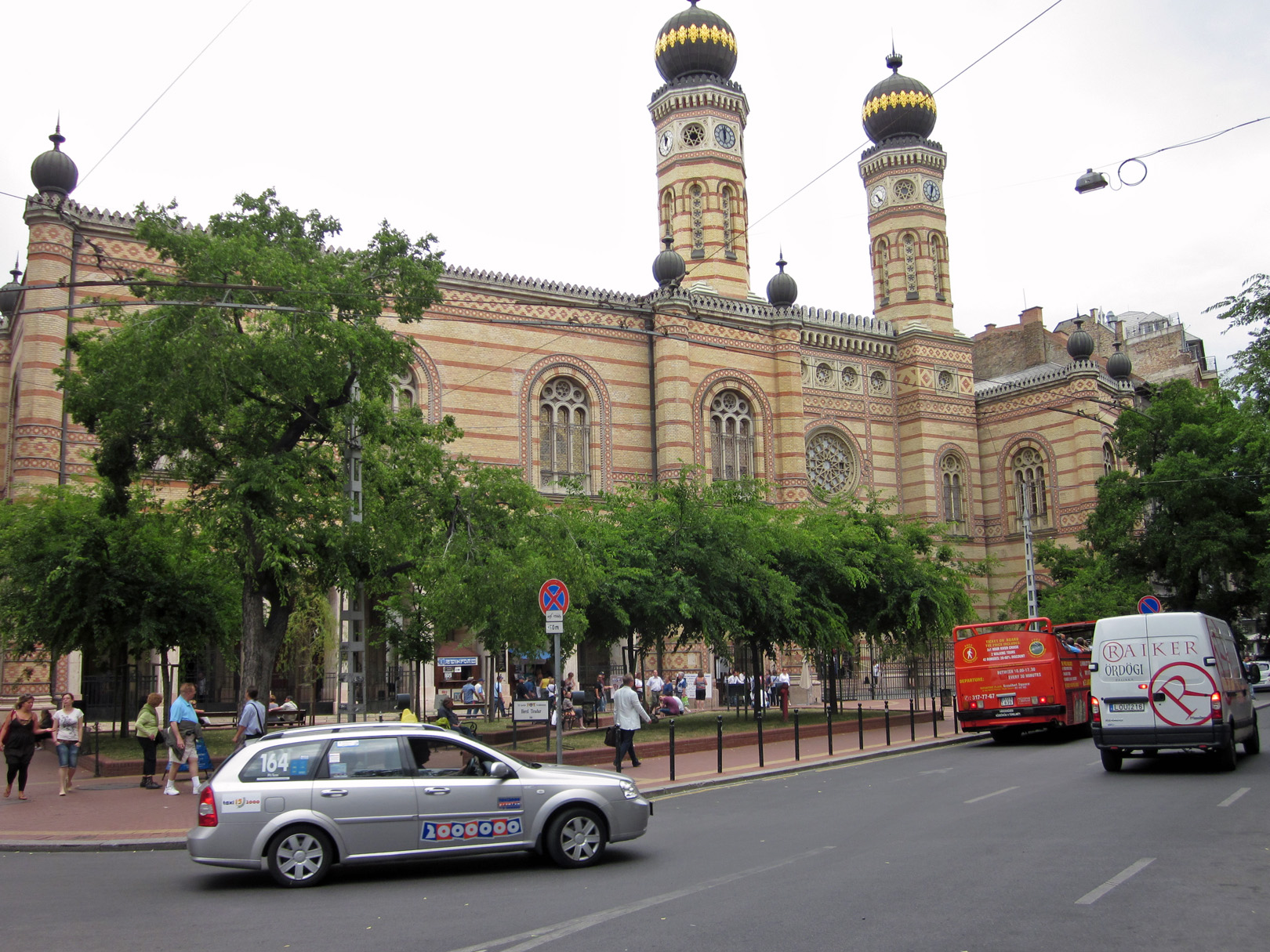
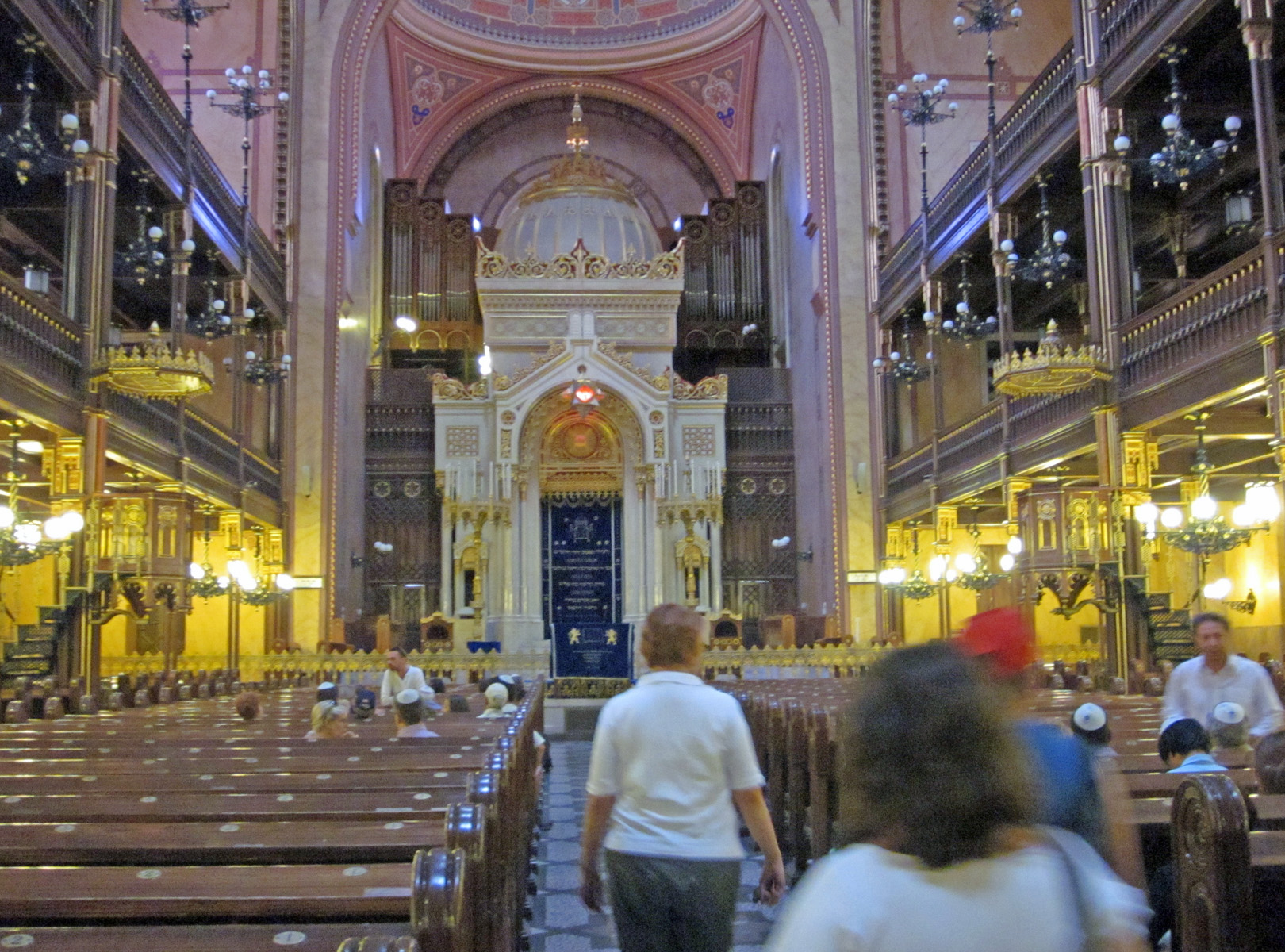
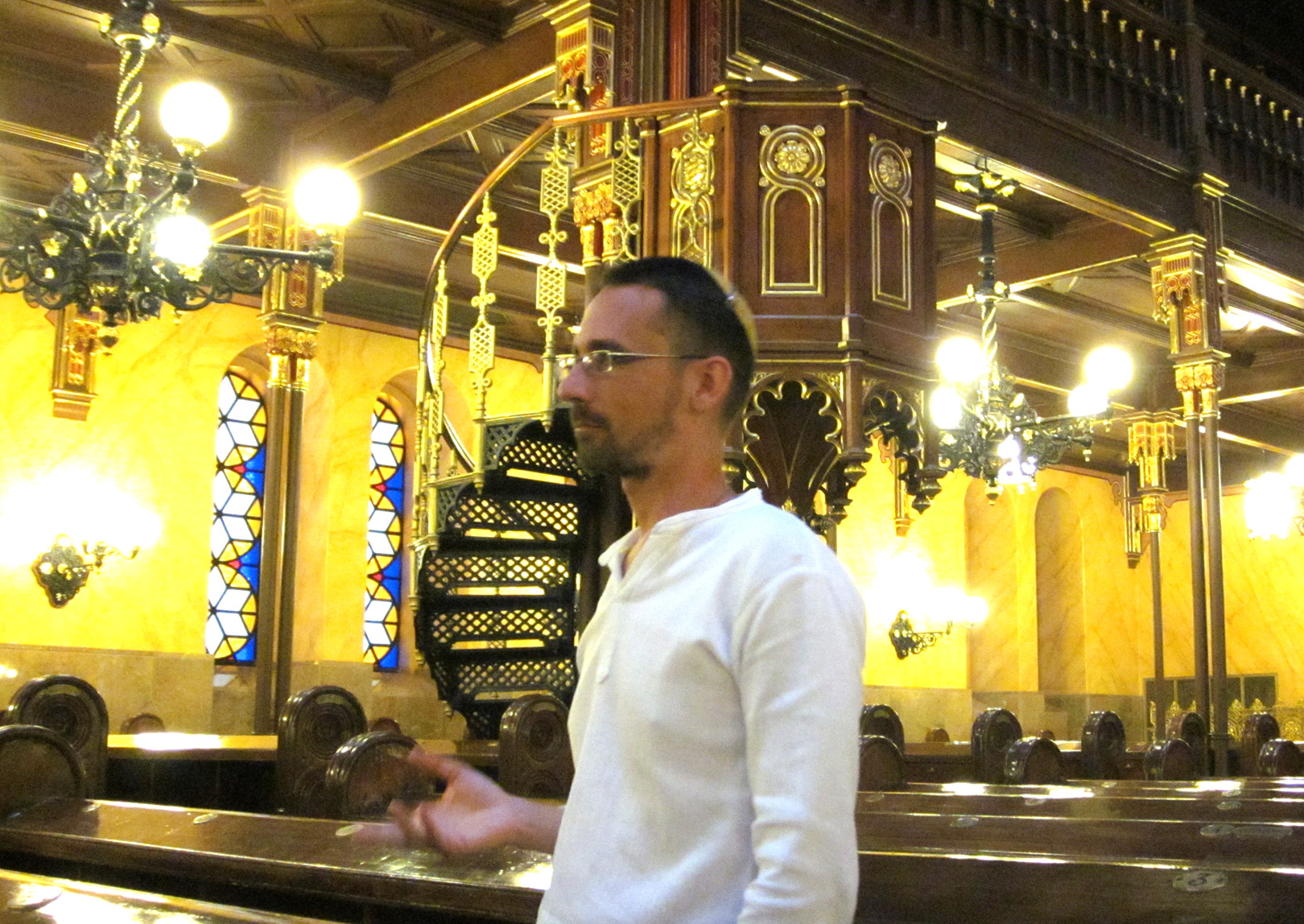
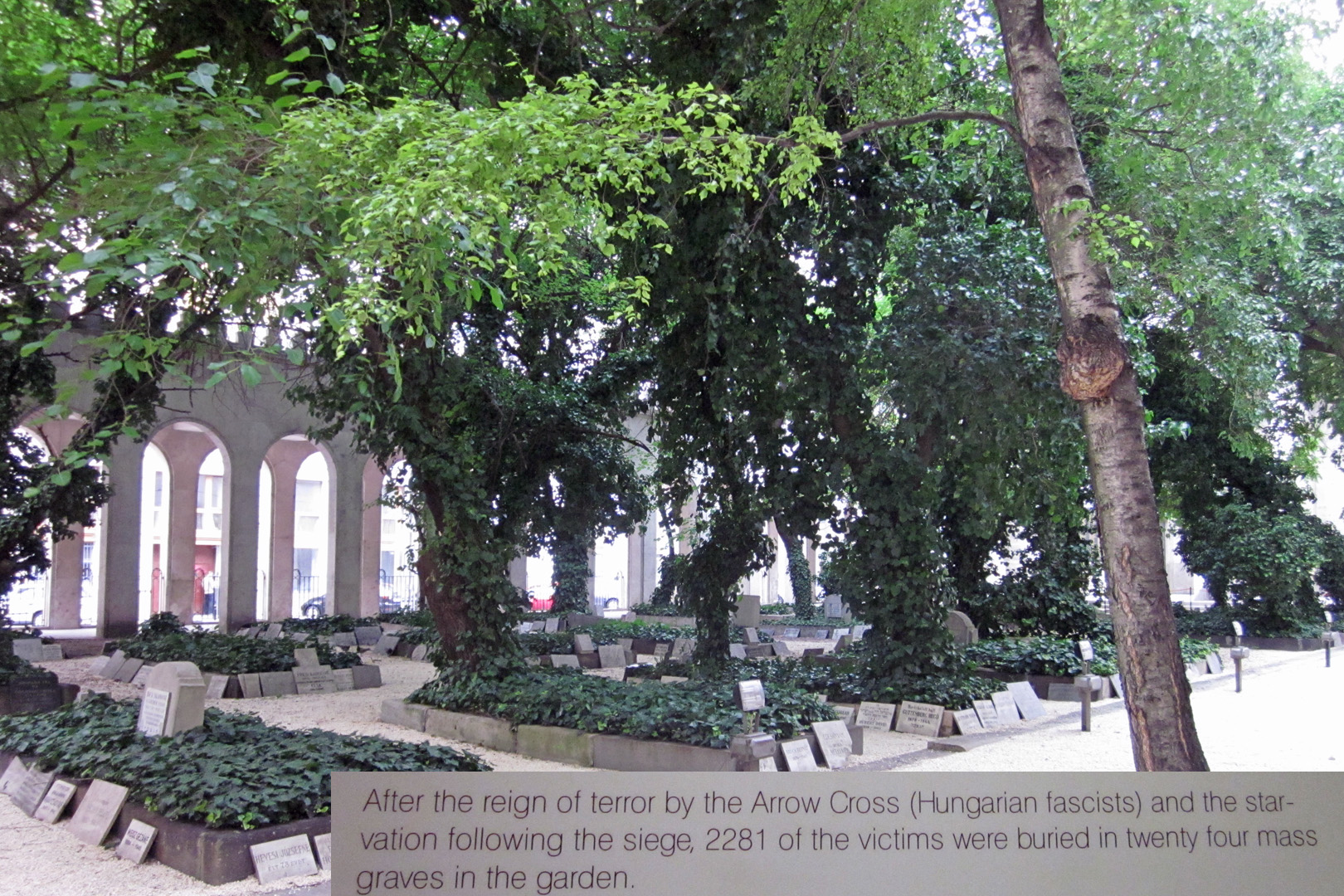
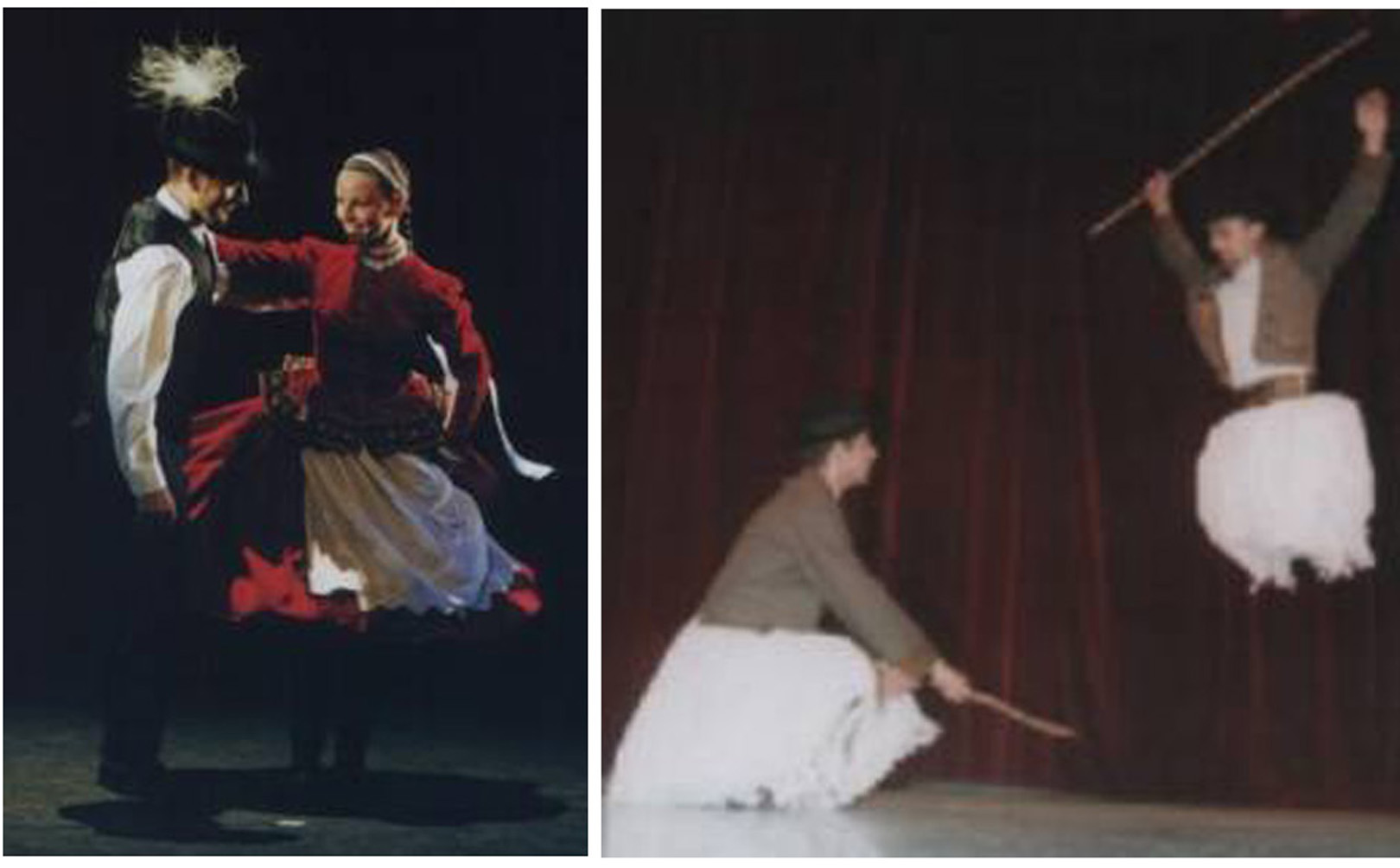
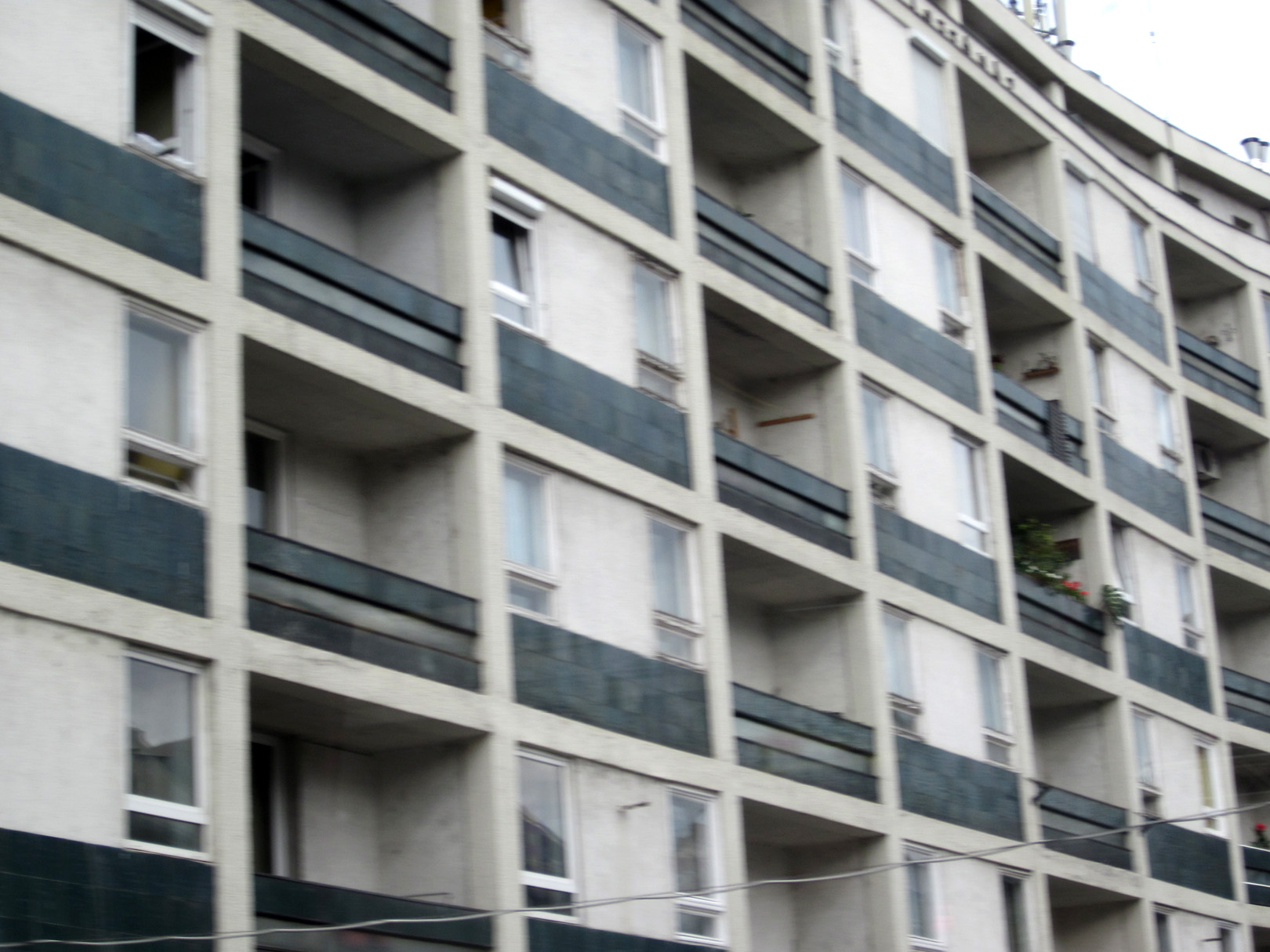
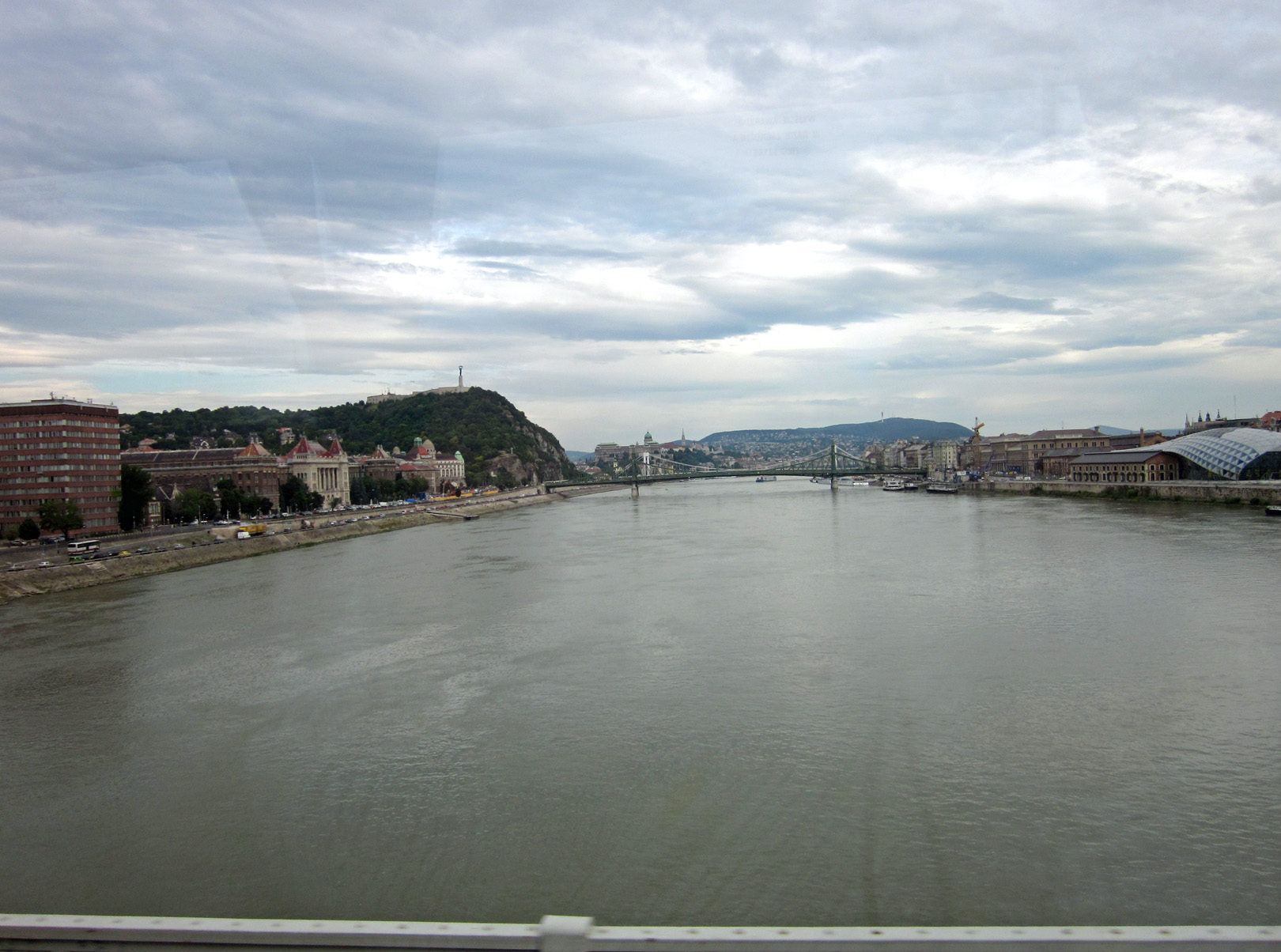
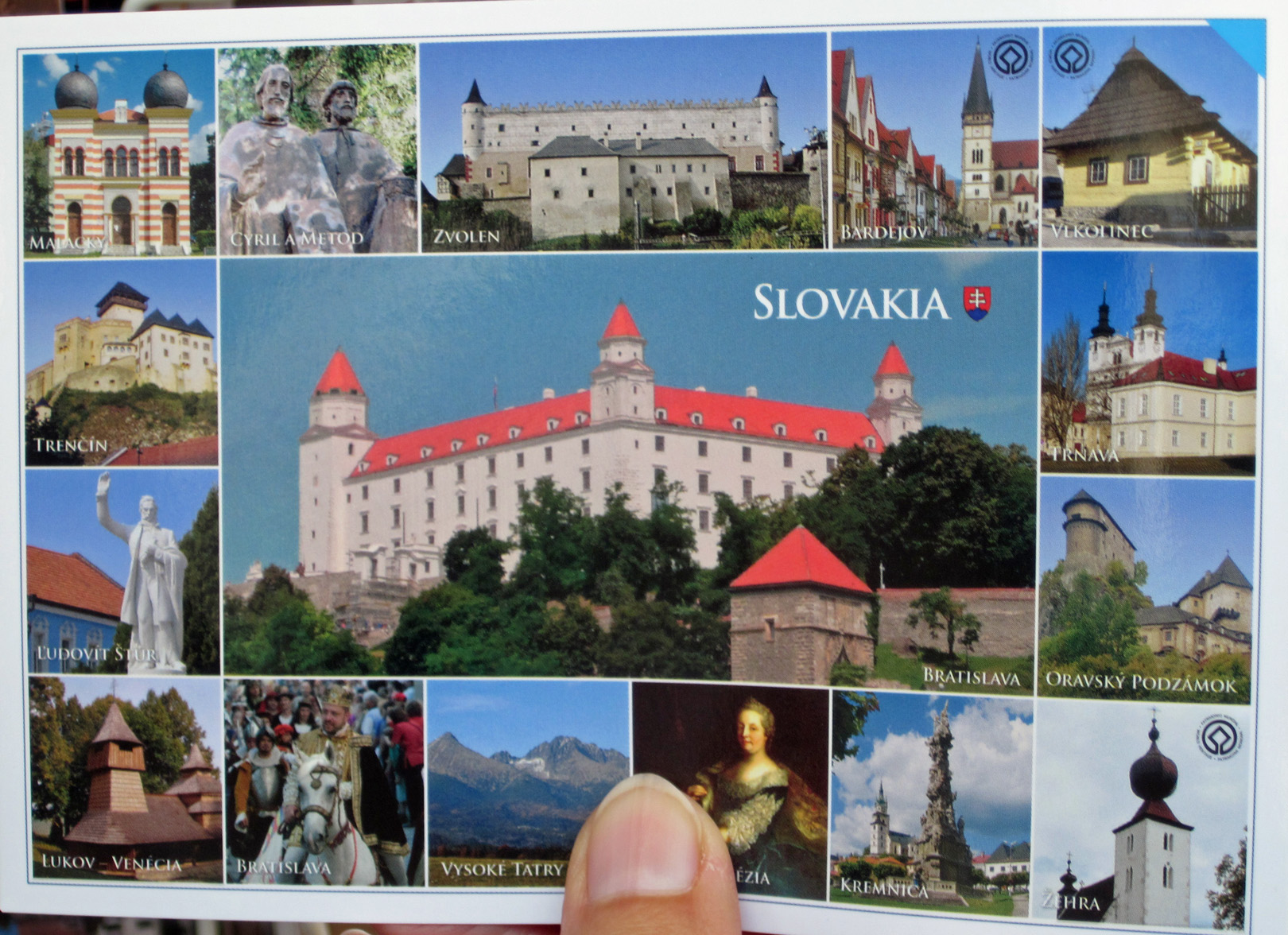
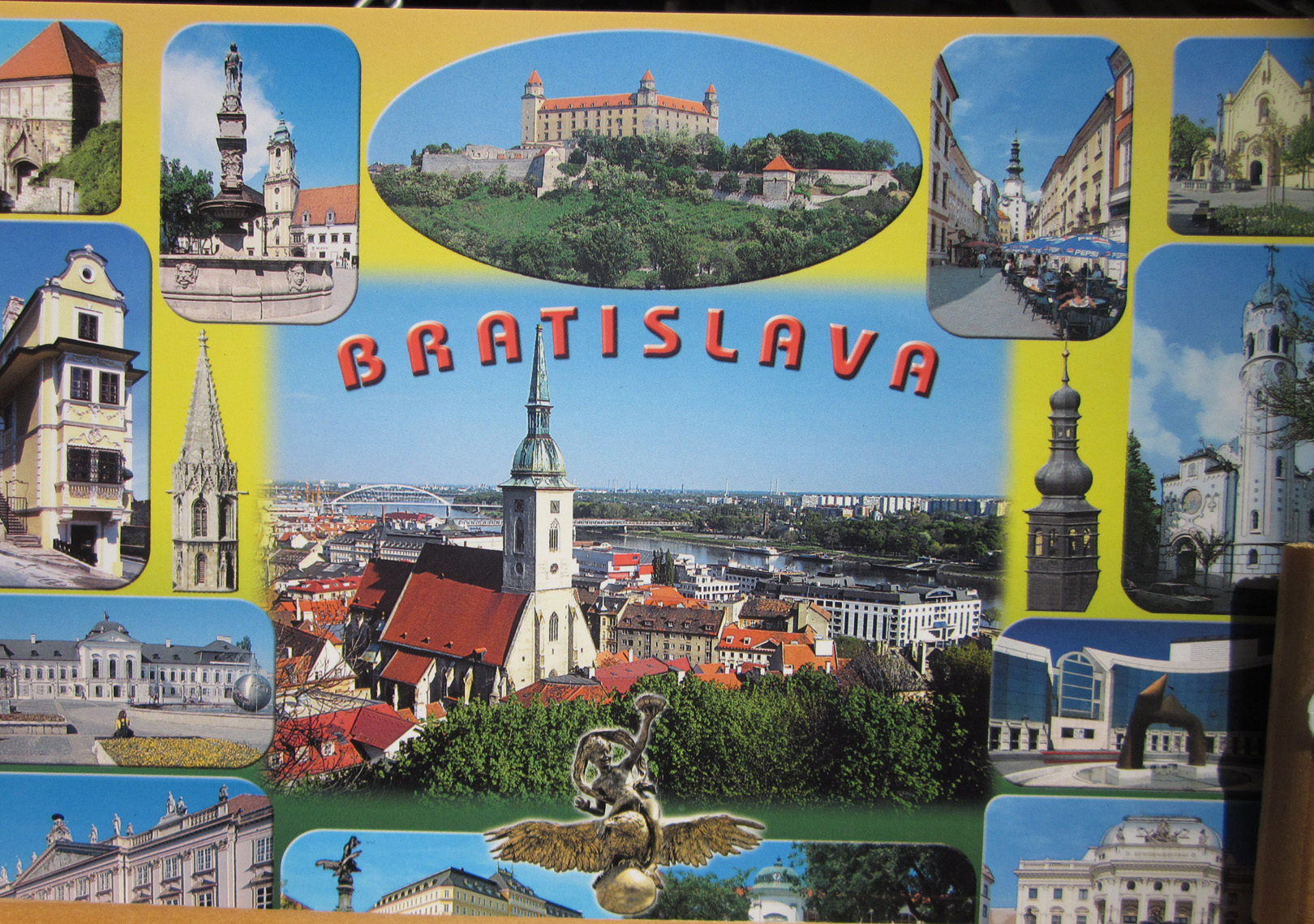
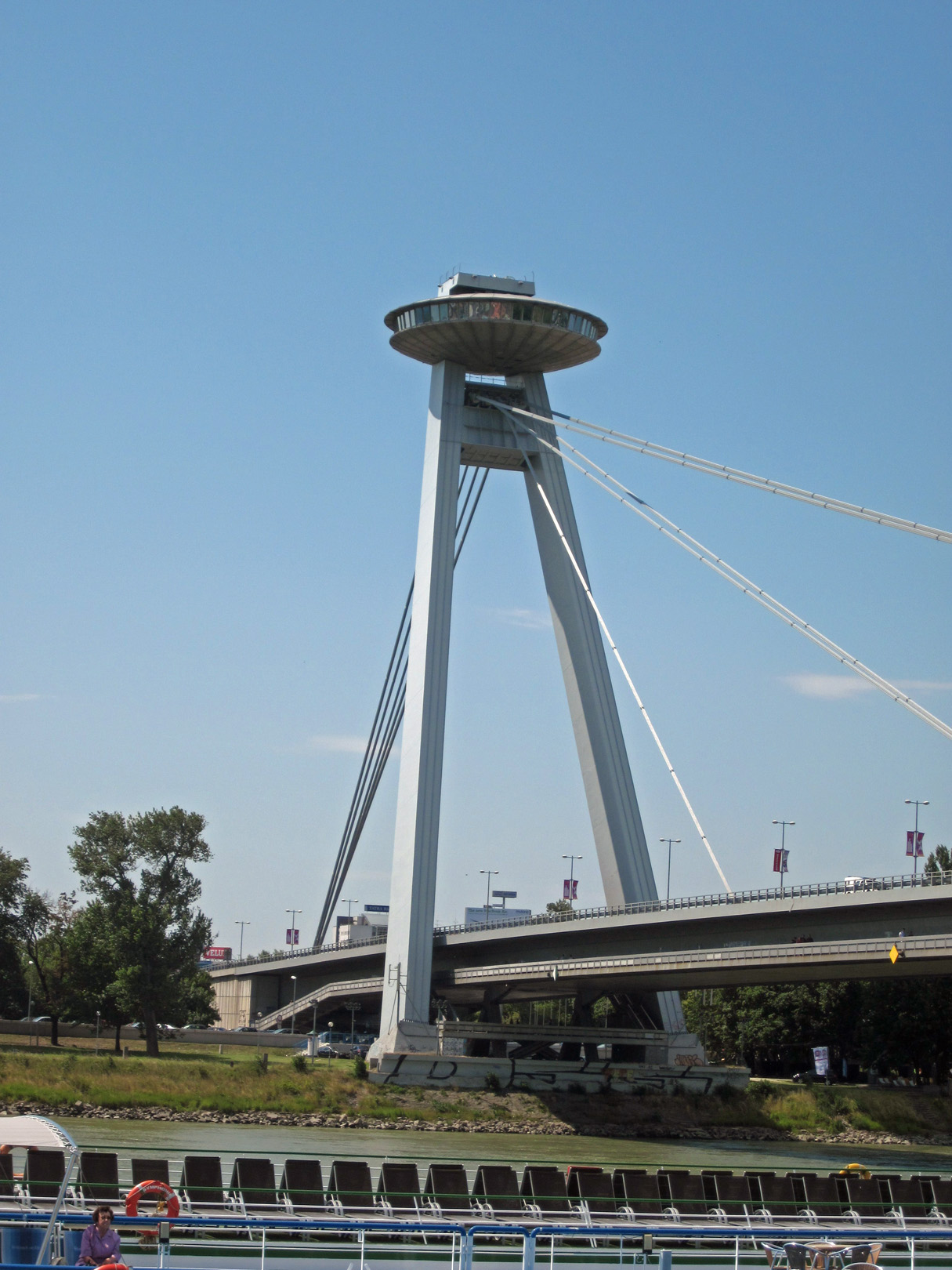

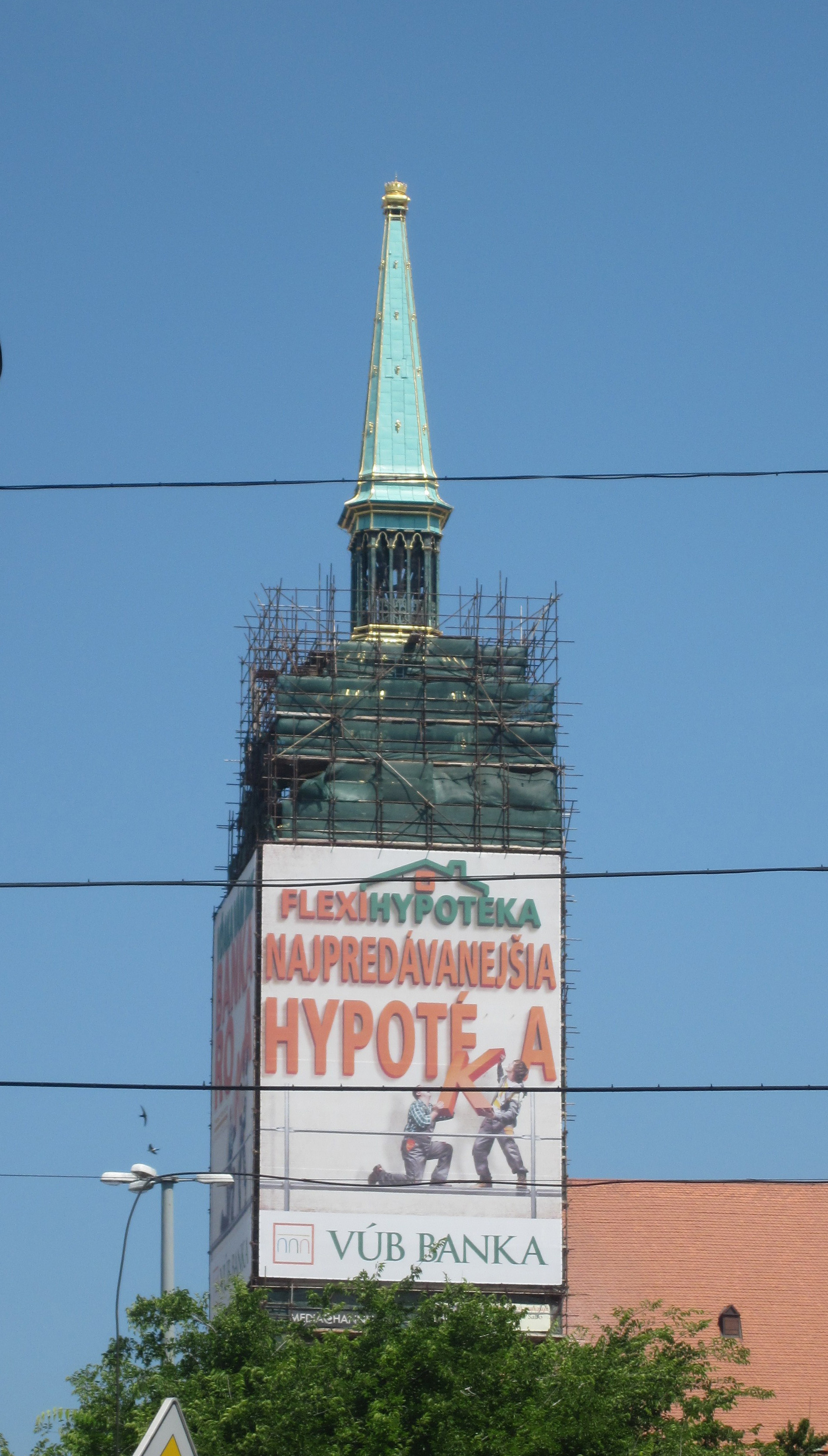
Go to Home
Go to P.2
Go to P.4
Go to P.5
Go to P.6
Go to P.7
Go to P.8
Go to P.9